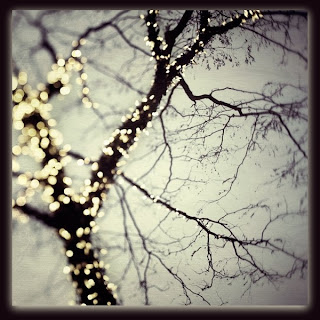It would seem to me that there are three categories of
present givers: those who like giving presents to others, those who appreciate
receiving, and those (not few in number) who prefer giving presents to
themselves.
Incidentally, "presents" is so much a better
sounding word than "gifts." And of course for the purposes of this post
I am trying to think of famous instances of presents.
What about the pearl that Cleopatra dissolved in wine
at the banquet with Antony? There would
not be much point in her melting down a present she had given to herself.
Whatever its history, it is curious indeed that this same pearl was till
lately, and may in fact still be, in possession of an English "noble
family." If you are willing to believe it, that is to say.
An English speaking instance and as typical as the
immortal words "Dr. Livingstone, I
presume ?" -whoever but him could it possibly have been ?- I have
transcribed and it reads as follows. "August 26, 1878. Again this dear and
blessed anniversary returns. When I came down to breakfast I gave Beatrice a
mounted enamelled photograph of our dear mausoleum, and a silver belt of
Montenegrin workmanship. After breakfast I gave my faithful Brown an oxidised
silver biscuit-box and some onyx studs. He was greatly pleased with the former,
and the tears came to his eyes, and he said 'it is too much.' God knows it is
not too much for one so devoted and faithful."
 This is that great letter writer Queen Victoria-one of
the best in the English language-on the birthday of her beloved Prince Consort.
She was, also, Empress of India as well
as the personification of half a century of history, alike in its dullnesses
and in its greatness.
This is that great letter writer Queen Victoria-one of
the best in the English language-on the birthday of her beloved Prince Consort.
She was, also, Empress of India as well
as the personification of half a century of history, alike in its dullnesses
and in its greatness.
But I am thinking now that there is another category that
of unwanted or unnecessary presents. "So and so, or so and so, will go on sending"; I am
certain we all have had experience of this. Bloggers, and I like to remind myself I am
one, are sent messages. What a nuisance it can be. For long months I was deluged
with missives with a missionary basis, or, rather, bias. And once, out of a
clear sky, I was asked to proceed immediately to a museum, at my own expense of
course, and lecture to them how the medieval game of spillikins was played.
They had been told, the message explained, that I was the only person who knew
about this. Had I gone, which I didn't, it would have come under yet another
heading, that of unwilling present giving.

Probably among the biggest present-givers was the Empress
Catherine the Great and Louis XV. The brothers Orlov; Zoritch, in his hussar
uniform of scarlet and silver, ablaze with diamond orders; Lanskoi; the brother
Zubovi; and of course, Potemkin, all of them her erstwhile favourites, received
in money alone from the hands of Catherine some 90,000,000 rubles, the
equivalent of £15,000,000 in mid- Victorian England. The Empress Catherine was
no giver of enamelled biscuit tins! If, on the other hand, the monastery of the
Troitsa, outside Moscow, was the possessor of 106,000 serfs and their families,
mostly derived from royal presents, but particularly from the Empress Elizabeth,
daughter of Peter the Great, the motive at least was different. It was not love
but repentance, and dread of the world to come.

Louis XV gave away tapestries and sets of Sevres porcelain,
and we may be sure passed the order and thought no more about it. Any more than Augustus the Strong whose presents
were not Sevres but Meissen. In those days it was ambassadors and not only
mistresses who were given dinner services. The full luxury of presentgiving was
possible until 1914 from the Saint Petersburg workshop of Faberge.
And even in one's own family-where more so, indeed?-there
are, and have been eccentrics. I had a great-uncle who gave pink
champagne. Why the champagne rose, I do
not know; but my mother, just married and eighteen years old, was loaded - with
pink champagne.
Ordinary mortals have to be content with presents from a shop.
I remember Guerlain and the way they used to tie up parcels in pink paper; and
trifles like their Extrait de potpourri de plantes marines! This makes me think of other places where it
is or was a delight to buy something.
There is the Farmacia di Santa Maria Novella in Florence,
founded in the time of the Medici Grand Dukes, where you can buy soap scented
with orrisroot from the Florentine blue or grey iris, and many things besides.
And then I remember the New York shop of Caswell-Massey.
Their mere catalogue was a delight to read, and they seemed to import things
from all over the world. There, in reckless mood, I bought deliciously smelling
soaps, and enjoyed it as much as looking in jewellers' windows in Place Vendome
and Rue de la Paix.

But the town of towns for shopping is Kyoto, the old capital
of Japan. In the paper fan shops one would like to buy up everything in sight,
while the Kabukiya doll shop, and I am no infantilist, is something
transcendental and extraordinary. There are, as well, the Thai silk shops in
Bangkok; and I am told another marvellous silk shop in Benares.
There was Hadji Bekir, where they sold Turkish delight in
Istanbul.
And there was the Juvenile and Theatrical warehouse in
Hoxton, run by
Mr. Pollock, a retired clown, where one bought "penny plain
and tuppenny coloured" prints of actors of the time of Grimaldi and Edmund
Kean. What a wonderful place that was!
And I end in thinking of the most exciting present I love
to receive (and we could give easily to each other) and I do not hesitate, each
other.
After a year of so many ghastly horrors, in which, I am
sure, many of our friends and contemporaries were touched, let us have more present giving instead of...
 Set down in what was once a rugged landscape,
Pasadena, California’s Church of the Angels is a little bit of home. At Christmas, children’s faces light the way
and angels come out of the woodwork.
Set down in what was once a rugged landscape,
Pasadena, California’s Church of the Angels is a little bit of home. At Christmas, children’s faces light the way
and angels come out of the woodwork.

































